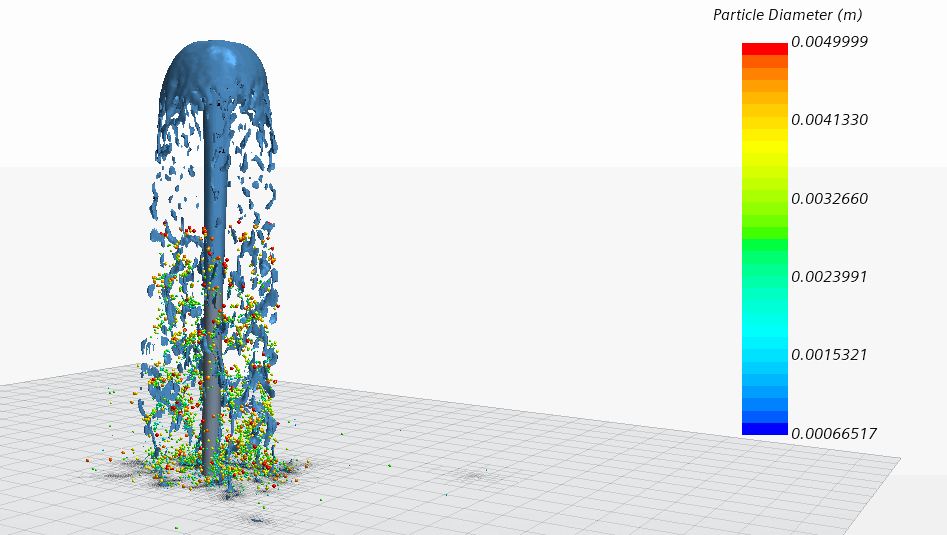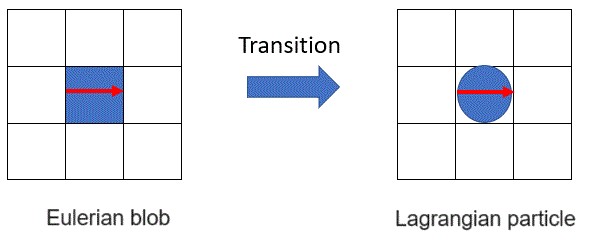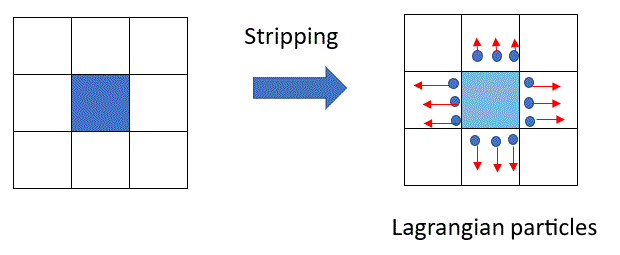Resolved Transition
Simcenter STAR-CCM+ provides the Resolved Transition model as a phase interaction model, which lets you capture the breakup of pools of liquid to form droplets emerging/stripping from a free surface or small bubbles stripped from a large bubble. This model is meant to be used as part of a hybrid multiphase approach where the Volume of Fluid (VOF) model or Mixture Multiphase (MMP) model is used alongside the Lagrangian Multiphase (LMP) model.
This modeling strategy allows you to maintain the accuracy of the Eulerian phase in areas where needed locally while employing the computationally more efficient LMP model to track particles. In this way, each multiphase model covers a particular flow regime, particularly in situations where the Eulerian phase requires a fine mesh along its whole path and becomes computationally more expensive than LMP. Applying the Resolved Transition model thus reduces the computational expense compared to a pure Eulerian multiphase simulation for applications such as a fuel spray break-up, tank sloshing, e-machine cooling, or vehicle water management.

Resolved Eulerian clumps (also called Eulerian blobs) are transitioned to Lagrangian particles based on user-specified criteria on blob size. Prior to transition, adaptive mesh refinement (AMR) can be used to track Eulerian blobs efficiently with a minimum cell count. Once the transition occurs, cell clustering can be used to avoid the resulting Lagrangian particle from overwhelming the cell if it is much smaller than the particle. When the Eulerian blob is removed, AMR can coarsen the mesh, and the Lagrangian particle becomes sub-grid. In this scenario, the LMP model can be seen as a sub-grid model for the VOF or the MMP model.
With the Resolved Transition model, all of the Eulerian phase that is contained in a cell, or a small cluster of cells (a blob), is converted to a single Lagrangian particle. If the phase volume fraction before the transition is close to 1 (the typical scenario), the Lagrangian particle has approximately the same size and velocity as the parent Eulerian blob cell, as illustrated below:

The Resolved Transition model for VOF multiphase simulations is different to the VOF-Lagrangian User Stripping model. Both models transfer a VOF phase to Lagrangian particles, but do so in different ways. In the VOF-Lagrangian User Stripping model, the Lagrangian particles are much smaller than the VOF blob cell. This model assumes that the Lagrangian particles are generated (stripped) from the VOF interface due to the physics being unresolved by the grid. The stripped particles are therefore smaller than the cell size and their velocity is away from the VOF interface, as illustrated below:
